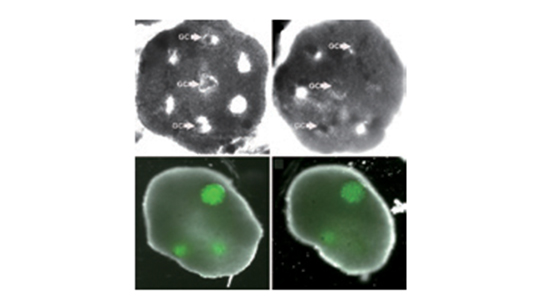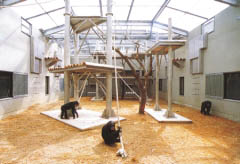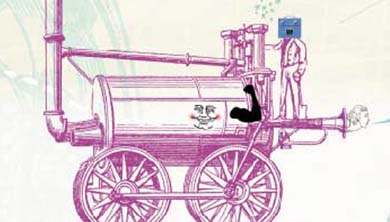
남극은 지구상에 남아 있는 유일한 청정지역이다. 그런데 1989년 1월 29일 그 북단지역에 기름이 흘러 넘쳤다. 사태는 더욱 악화될 것으로 보이는데 그 이유는 관광객이 늘어나고 이에 따라 배나 쓰레기도 늘어나며 결국 전반적으로 오염이 더해질 것으로 예상되기 때문이다. 이런 상황이 '남극은 기껏 거대한 얼음쓰레기장에 불과한 것이 아닌가'하는 이유로 우리가 걱정할 필요가 없는 것처럼 보일지 모른다.
허나 사정은 전혀 그렇지 않다. 남극지역의 내부는 명백히 지상에서 가장 심한 불모지역이지만 주변은 펭귄이나 물개 갈매기들의 보금자리인 것이다.
한걸음 나아가 주변의 바다를 고려한다고 상상해 보자. 즉 남극해를…
지상의 생명체들은 산소보다는 물에 더 의존한다. 어느 정도 깨끗한 공기를 마실 수 있는 곳이라면 산소는 자유로 얻을 수 있다. 그러나 물은 골고루 어디에나 있는 것이 아니다. 땅위에는 거의 물을 얻기 어려운 곳이 있으며 그런 곳은 생명체가 드문 사막이다. 비가 많이 오는 곳도 있으며 그런 곳은 생명체들로 충만해 있다.
바다의 생명체에는 사정이 달라 문제가 되는 것은 물이 아니고 산소이다. 바다에서는 물은 어디에서나 흔하지만 산소는 그렇지 않다. 공기중의 산소와 대양의 표면에 있는 작은 녹색식물에 의해 만들어진 산소는 물에 용해된다. 그리고 모든 바다생물은 이 용해된 물에 의존해 살아갈 수 밖에 없는 것이다.
바람은 바다의 표면을 휘젓고 그리하여 산소는 계속 물 속에 용해된다. 해류(海流)는 이 용해된 산소를 모든 곳, 심지어 해저에까지 전달한다. 그렇지만 어느 정도의 산소가 있는가. 충분히 있는가?
산소량은 온도에 좌우된다. 물의 온도가 높을수록 어떤 종류의 가스이건 보다 적은 양을 용해하게 된다. 여기에는 물론 산소도 포함된다. 이 얘기는 열대의 따뜻한 바닷물은 극지(極地)의 차가운 바닷물보다 겨우 반이 약간 넘는 산소를 용해하고 있다는 사실로 이어진다.
극지주변의 찬 물에 노출된 사람은 몸이 마비되어 곧 죽게 되지만 열대의 따뜻한 물은 수영하기에 좋은 낙원이다. 그러나 대부분의 바다 생물에게는 그렇지 않다.
열대의 바다는 산소가 희박해 다른 지역의 바다와 비교할 때 사막과 같은 곳이다. 허나 양극해는 생명으로 충만하다. 아주 작은 생명체들이 믿기지 않을 정도로 많이 있으며 이것을 작은 동물들이 먹고 또 그 동물들을 보다 큰 동물들이 먹는 등, 먹이고리가 형성돼 있는 것이다.
실제 과거나 현재 지구에 살았던 가장 큰 동물인 거대한 푸른색 고래는 남극에 본거지를 두고 있다. 이 고래는 지상에 살았던 가장 큰 공룡보다 무게가 배나 되는 1백50t이나 나간다. 이 고래는 2인치정도 크기의 작은 새우처럼 생긴 방대한 양의 크릴을 그 거대한 아가리로 삼키며 살아가고 있다.
남극대륙 자체는 거의 동토의 불모지라고 할지라도 주변 해역은 지구의 가장 풍요한 생명의 보고이며 먼 남쪽바다의 우리에게 익숙한 큰 생명체들, 즉 펭귄이나 갈매기, 물개, 돌고래, 고래들을 살게 해 주는 곳이다. 우리가 이 지역을 심하게 훼손하면 지상의 생태계에 큰 구멍을 만드는 셈이된다. 생태계의 어느 한부분은 다른 부분에 의존하는 것이며 따라서 생명이 충만한 한 장소에서의 훼손은 다른 모든곳에 어느정도의 훼손을 가져오게 된다.
많은 종류의 오염이 점차 자연적으로 깨끗해진다. 기름유출이 심각한 정도라 할지라도 어느정도는 증발되고 점차 분자들이 해체되어 나중에는 기름이 없어지고 만다.
그러나 이런 과정이 충분하게 빨리 진행되는 것이 아니어서 기름이 해체되기이전 상당한 해를 끼치게 된다. 이번 남극의 사고때에는 수백톤의 디젤유가 유출되었다. 디젤유는 연료유보다 빨리 번지고 빨리 증발한다. 그러나 독성은 더 심하다.
불행히도 모든 화학변화는 기온이 떨어질수록 느려지는 경향이 있어 추운 겨울에는 유출된 기름의 증발과 해체가 느려진다. 추운 남극에서는 기름의 증발과 해체정도가 따뜻한 장소에서보다 1백분의 1밖에 안된다. 따라서 이번의 유출사고는 일부 비관론자들이 지적하듯 그 영향이 1세기나 그 이상이 될지도 모른다.
남극지역은 생태학적 역할과 과학에 유용한 지식의 저장소로서 지상의 인류에게 가치있는 곳이다. 더욱 이지역은 아직 인류에 의해 훼손되지 않은 몇개 지역의 하나로서 될수록 순수하게 보호·보존해야할 책임을 우리는 지고있는 것이다.
관광객의 즐거움에 봉사하기위해 이지역을 개방하는 것은 오직 사태를 악화시킬 뿐이다.
계속 관광객을 실어 나르는것은 이번의 유출사고와 같은것을 더욱 빈발시킬 위험이 있다.
남극을 주유(周遊)하다 디젤유를 흘린 아르헨티나 선박은 남극의 아르헨티나 과학기지에 보급품을 전달하는 배였으나 관광객을 1백여명 태우고 있었다. 이런 보급선들은 순전히 보급기능만을 수행해야 하며 관광객들은 다른 곳에서 여가시간을 즐길수 있도록 유도해야 할 것이다.
Antarctica is the last clean place that's left on Earth and the northernmost edge of it was subjected to an oil spill on Jan. 29, 1989. Things might get worse, too, for Antarctica is expected to get increasing numbers of tourists, and ships, and garbage, and pollution in general. It might not seem that is one of the things we ought to worry about because, after all, isn't Antarctica just a huge waste of ice?
Actually, though, that isn't all it is. The interior, admittedly, is the most life-free spot on Earth, but the rim of the continent is home to penguins, seals and skua gulls.
And more than that, suppose we consider the area around it, the Antarctic Ocean.
Life on land depends on water rather than oxygen. Oxygen is freely available wherever one can breathe reasonably clean air, but water is unevenly distributed.
There are places on land that get very little water and those places are deserts where life is rare. There are places where rain is copious and there we have forests that are filled with a riot of life.
For life at sea, it is just the other way around ; it is oxygen that counts, not water. Water is freely available everywhere in the sea, but oxygen is not. Oxygen from the air and oxygen formed by microscopic green plants in the ocean surface dissolve in water and it is on this dissolved water on which all animal life in the sea must live.
The winds see to it that the surface of the ocean is roiled up, so that oxygen is constantly being dissolved. Water currents in the sea carry that dissolved oxygen to all parts and to all depths, even to the very bottom. Still, how much oxygen is that? Is it enough?
That depends on the temperature. The warmer the temperature of the water, the less gas of any kind it will dissolve ; and that, of course, includes oxygen. This means that warm water of the tropical seas dissolves only a little more than half as much oxygen as the icy water of the polar seas.
For human beings exposed to the cold water near the poles there is only numbness and quick death, while the warm water of the tropics is a paradise for swimmers― but not so for sea life in general.
The tropical waters, with their dearth of oxygen, are, compared with other parts of the ocean, deserts. The polar waters, however, are rich with life. Microscopic life swarms in incredible abundance. Small animals feed on it, larger animals feed on them, and are eaten by still larger animals― and so on.
In fact, the largest animal that ever lived on Earth, past or present, the gigantic blue whale, which can weigh up to 150 tons, twice the mass of the largest dinosaur that ever lived, makes its home in the Antarctic, where it lives by scooping up, in its gigantic maw, vast quantities of krill, small shrimplike animals up to 2 inches long.
So if the continent of Antarctica itself is largely a frozen wasteland, the waters surrounding it are the richest reservoir of life on the planet, and support the familiar large animals of the far southern seas―the penguins, gulls, seals, dolphins and whales. If we damage the region badly, we tear an enormous hole in the fabric of the planetary ecology. Remember that every part depends on every other part, so that damage in the one place that is richest in life is bound to result in some damage everywhere.
Many kinds of pollution are cleaned up gradually by natural processes. An oil spill, damaging though it is, evaporates to some extent, breaks down, is gradually degraded, and finally disappears. It doesn't do this quickly enough, to be sure, so that before it degrades, it causes much harm. In this Antarctic incident, several hundred tons of diesel fuel were spilled. Diesel fuel spreads out and evaporates more rapidly than fuel oil― but it is also more toxic.
Unfortunately, all chemical processes tend to slow down as temperatures drop, so that, in cold water, the evaporation and degradation of the spill is slowed. And, at cold Antarctic temperatures, the rate of evaporation and degradation may be only one-one hundredth what it is in warmer climates. It may be, then, as some pessimists calculate, that spills of this sort may make their effects felt for a full century or more.
The Antarctic region is valuable to the people of Earth because of its ecological role and as a mine of information useful to science. In addition, we have a responsibility to try to protect and preserve in as pristine a state as possible the few areas on Earth not yet spoiled by man.
Opening up the continent for the pleasure of tourists will only make things worse. A continual infusion of sightseers will only make accidents like this oil spoil more likely.
The Argentinian ship that went aground and spilled the diesel fuel was a supply ship for the Argentinian scientific station on the continent, but it also carried about a hundred tourists. Such ships should limit themselves to their essential supply functions and let the tourists find somewhere else to spend their leisure time.
(c) 1989, Los Angeles Times Syndicate


















